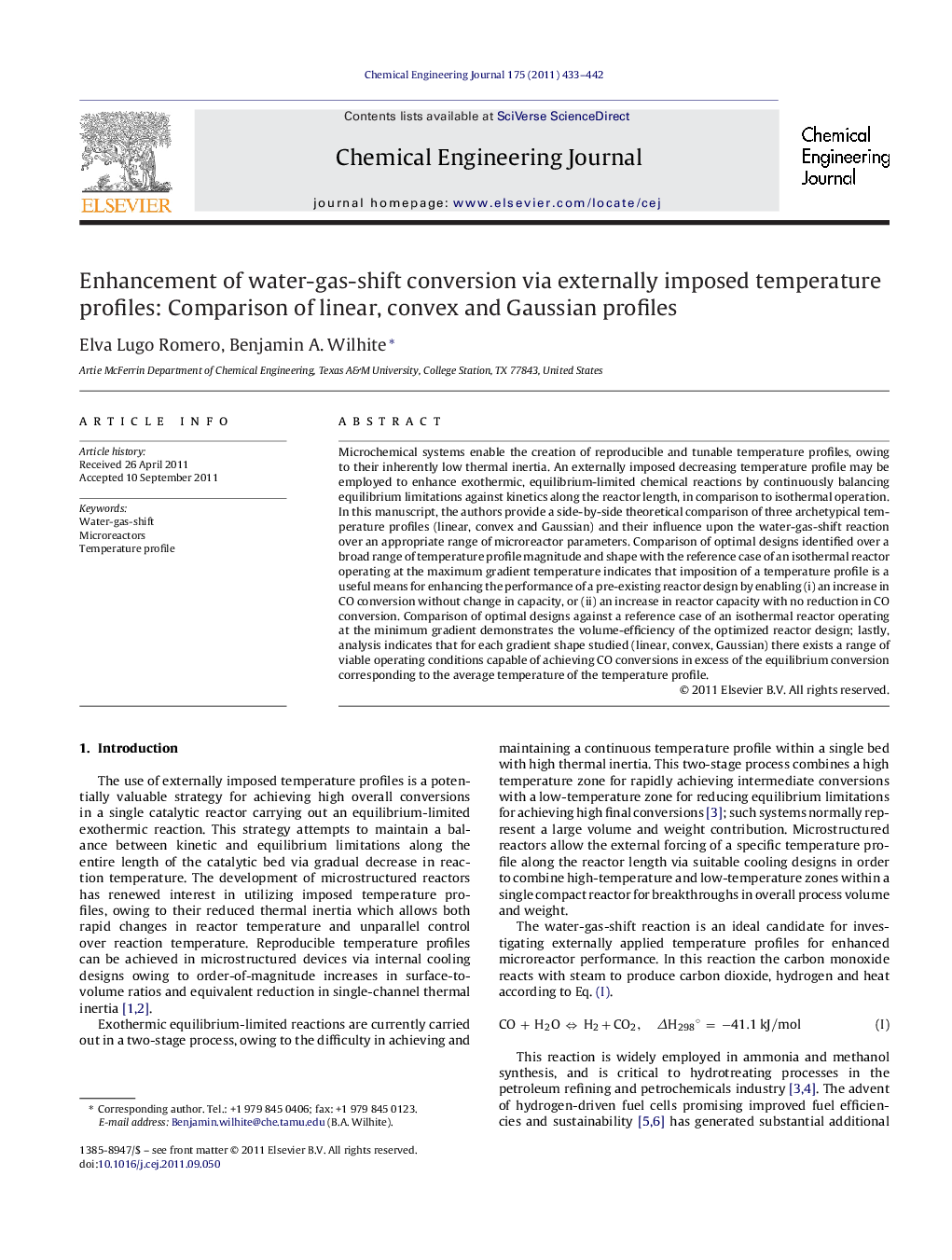| کد مقاله | کد نشریه | سال انتشار | مقاله انگلیسی | نسخه تمام متن |
|---|---|---|---|---|
| 151000 | 456460 | 2011 | 10 صفحه PDF | دانلود رایگان |

Microchemical systems enable the creation of reproducible and tunable temperature profiles, owing to their inherently low thermal inertia. An externally imposed decreasing temperature profile may be employed to enhance exothermic, equilibrium-limited chemical reactions by continuously balancing equilibrium limitations against kinetics along the reactor length, in comparison to isothermal operation. In this manuscript, the authors provide a side-by-side theoretical comparison of three archetypical temperature profiles (linear, convex and Gaussian) and their influence upon the water-gas-shift reaction over an appropriate range of microreactor parameters. Comparison of optimal designs identified over a broad range of temperature profile magnitude and shape with the reference case of an isothermal reactor operating at the maximum gradient temperature indicates that imposition of a temperature profile is a useful means for enhancing the performance of a pre-existing reactor design by enabling (i) an increase in CO conversion without change in capacity, or (ii) an increase in reactor capacity with no reduction in CO conversion. Comparison of optimal designs against a reference case of an isothermal reactor operating at the minimum gradient demonstrates the volume-efficiency of the optimized reactor design; lastly, analysis indicates that for each gradient shape studied (linear, convex, Gaussian) there exists a range of viable operating conditions capable of achieving CO conversions in excess of the equilibrium conversion corresponding to the average temperature of the temperature profile.
► Demonstrate influence of applied temperature profiles upon water-gas-shift reaction.
► Compare performance with applied temperature profiles against isothermal cases.
► Identify design targets for improving existing reactor designs via applied temperature profiles.
► Identify criteria for achieving conversions in excess of equilibrium-limitations.
Journal: Chemical Engineering Journal - Volume 175, 15 November 2011, Pages 433–442